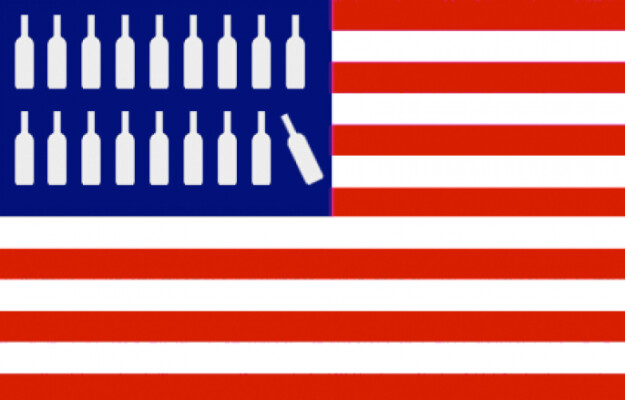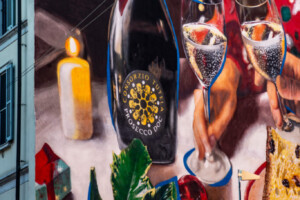This year has not been one of the best for wine consumption, which has marked a worldwide downturn. In particular, the U.S. wine market, which remains No. 1 in the world, by far, and also for exports from the wineries of the Belpaese has shown worrying trends accomplice to a series of political-economic and demographic factors touching the lowest point, returning to 2016 levels, in 2022. Just look at the Italian figure, with Italian wine exports in the first 7 months of 2023 marking -8.1% on 2022, amounting to 1.04 billion euros, according to Istat data. Analyzing trends in the most important market for Italian wine, at the “Wine2Wine Business Forum” No. 10 in Verona, Danny Brager, leading industry analyst and member of the Wine Market Research Committee. His talk was rich not only on the Wine Market Council’s (Wmc) analysis, which provides data, trends, insights and essential information on the wine market at all levels of the wine industry, but also other sources of important observers of the various distribution segments, such as NielsenIQ, SipSource and somm.com.
Knowing how to realistically quantify the opportunities in the complex U.S. market, and how one’s wine is different and better, is critical. It is imperative to know how to innovate the product by exploring the “better for you” area, that is, in the aspects that consumers prioritize, such as low levels of alcohol, carbohydrates and sugars, organic and biodynamic, and consistency in labeling and communication by focusing on alternative packaging in terms of volume and materials (sales of 0.75 bottles are going down, which nonetheless remain in the lead, smaller formats are going up; glass is going down and other containers are going up). Broaden the focus from the marketplaces of states where Italian wine is already established, to “ess developed” ones, such as Colorado. And last but not least, collectively support appellation brands by overcoming competition and collaborating with competitors to create a shared image. The U.S. market loves uniqueness, history and culture, and in Italy these elements are not lacking. These, in summary, are the pointers that came out of Brager’s talk for Italian wine producers.
“Many things have happened in the last four years that have had a major impact”, Danny Brager premised, “from the pandemic, to domestic political-economic instability due to the upcoming 2024 elections, record levels of consumer debt, high inflation and interest rates, and external related to the wars in Ukraine and the Middle East. If the unemployment rate is low, inflation and rates affect consumption. For the average consumer, wine is a voluptuary good and comes after bills”. That of the U.S. is a large, complex and fluid market in which 80 million consumers--including 44 regulars and 36 occasional consumers--buy 386 million cases of wine (9 liters each, including 23 sparkling wines) of 400,000 references. A fluid market into which 110,000 new labels land each year. “So it is clear that you have to fish where the fish are”, - Brager said with an effective example. That is, understanding current trends and looking at the numbers. 28% of U.S. consumers of legal drinking age abstain from drinking alcohol, with elderly and young people predominating; only 10% are regular drinkers and those who drink once a week are 18%, while 15% drink once every two or three months; finally, the largest group (29%) are those who drink only beer, spirits or other alcoholic beverages.
“The lowest consumption is found in the 21-49 age group”, Brager pointed out, “and among Hispanics, who are therefore the targets to work on. For young people fundamental are the “flavor” and are interested in wellness, understanding what they drink and eat, and also convenience. The experiential drive is then key: we need to connect the wine to the country of origin and the values of the wineries, which are becoming increasingly important. It is also important to understand the trends, differentiated on an ethnic basis between Hispanics, blacks and Asians, which are driven by the younger generations. This is very important because the multicultural majority will increasingly be the norm”.
The scenario drawn by Brager contradicts what has been said so far, It is not true that today “we drink less, but better”. The analysis is far more complex: fewer and fewer drinkers are exclusive to one category, competition is increasingly fierce not only with other alcoholic beverages, but also with others. “Spirits are winning, beer, slowly but long since, is declining, while the decline in wine has occurred more recently”, Brager argued. According to whom a new and fearsome competition comes from soft drinks and, increasingly, hemp. Forty-two percent of wine drinkers have purchased Cannabis, legal in 25 states, and of those at times 59% choose it as an alternative. Consumers choose different drinks depending on the occasion. Forty-eight percent of the time spirits, particularly vodka, tequila, followed by ready-to-drink-Rtd cocktails (43%) and homemade cocktails (41%), hard seltzer, flavored, lightly alcoholic, and fizzy drinks all crowd the supermarket shelves, and only in fifth place is wine (32%). Among these, whites perform better than reds, and the “better for you” segments are growing well. Wine Cocktails are growing in small formats, but well below the share of Spirits Rtd”.
The good news is that Italy remains by far the leading wine importing country in the U.S.: the share of table wine is stable over the years and sparkling wines are growing supported by Prosecco and Pinot grigio. “The change in lifestyles toward more informal situations”, he stressed, “requires that wine become more “casual”, that it be renewed because it is perceived as an “old” drink that is always the same. We need to work on the perception of wine and, I reiterate, focus on “better for you” elements, just as other beverages are doing”. However, the growth of spirits in the face of declining wine consumption, especially in light of the quest for health-first sustainability, has contradictory aspects, as pointed out by Ettore Nicoletto, ceo Angelini Wines & Estates, who moderated the meeting with Danny Brager.
“Actually, the ready-to-drink cocktails that take market away from wine”, replied the Wmc Research Committee analyst, “have a low alcohol content, and then there is the ethnic component: Hispanics preferably drink tequila. Then there is another aspect, which is price. Whereas to drink a glass of wine you have to spend a minimum of $2.5, for one of vodka you only need $1. Also there is the aspect of innovation: many prefer to spend $15 on a cocktail they don't know how to make at home rather than on a bottle of wine”.
Copyright © 2000/2025
Contatti: info@winenews.it
Seguici anche su Twitter: @WineNewsIt
Seguici anche su Facebook: @winenewsit
Questo articolo è tratto dall'archivio di WineNews - Tutti i diritti riservati - Copyright © 2000/2025









































































































































































































